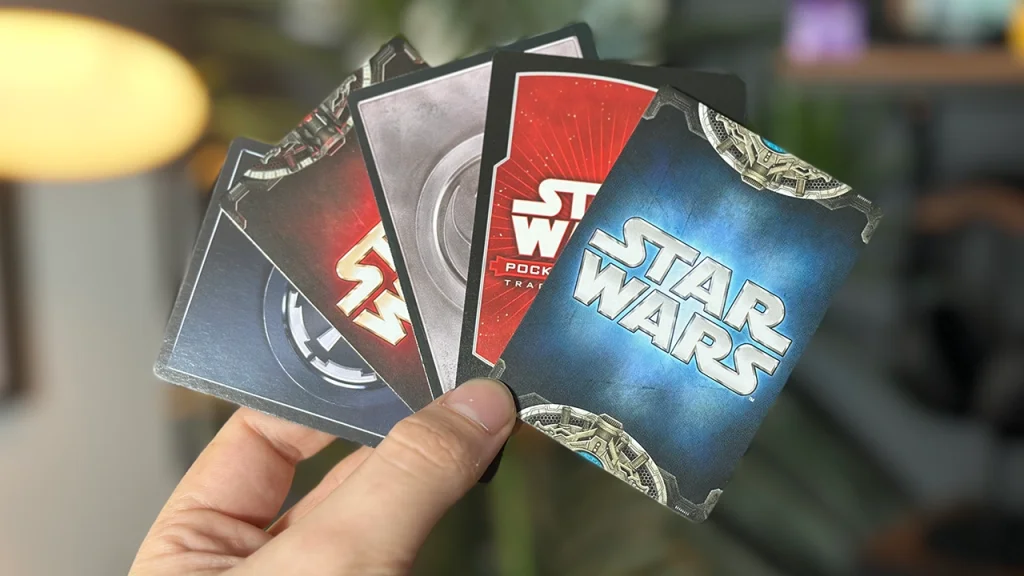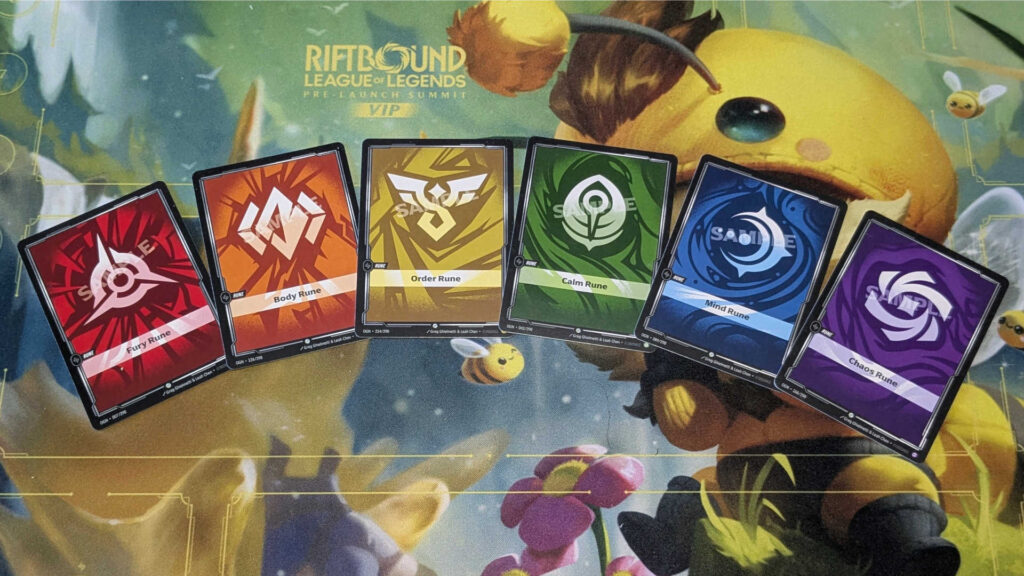The history of Star Wars tabletop games goes almost as far back as the movie itself, which launched in the Summer of 1977 and promptly became one of the most popular franchises of all time.
The creator of Star Wars, George Lucas – who also wrote and directed the first film – was able to secure himself an incredible deal in ensuring that he retained the licensing rights to merchandise, and set about getting Star Wars branding on just about any product you can think of.
Most notably and enduringly, perhaps, in the form of Star Wars toys and games.
Though this sort of omnipresent merchandising push is incredibly common these days, even for films you wouldn’t necessarily think of as being aimed at kids at all, including Robert Pattinson-led, none-more-dark The Batman, which somehow got its own Lego sets and, hilariously, stretchy Batman toys.
And it’s Star Wars that created the template for just how it could be done, so let’s jump into it, and space travel to where it all began.
Table of Contents
ToggleThe Early Years: 1977-1995

Kenner – who held the toy license for Star Wars – released two Star Wars board games in 1977.
Both the ‘Escape from Death Star Game’ and ‘Destroy Death Star Game’ were visually interesting, nicely packaged titles. The Destroy Death Star Game had fantastic X-Wing pieces, for example, that were nonetheless products of their time, both being simplistic, roll-and-move style designs.
Of course, many more board and card games followed over the years, even when it seemed – between the end of the original trilogy with 1983’s Return of the Jedi and the first prequel in 1999 – that there would be no more Star Wars movies.
In fact, slap bang in the middle of this period were the first signs that Star Wars could find a natural home on the tabletop. West End Games produced not only the phenomenal and hugely important Star Wars: The Roleplaying Game – which actually ended up being the basis for a huge amount of Star Wars lore, giving names and history to swathes of alien races only briefly seen on-screen – but also a selection of superb, hex-based games that were much more modern and satisfying for older players.
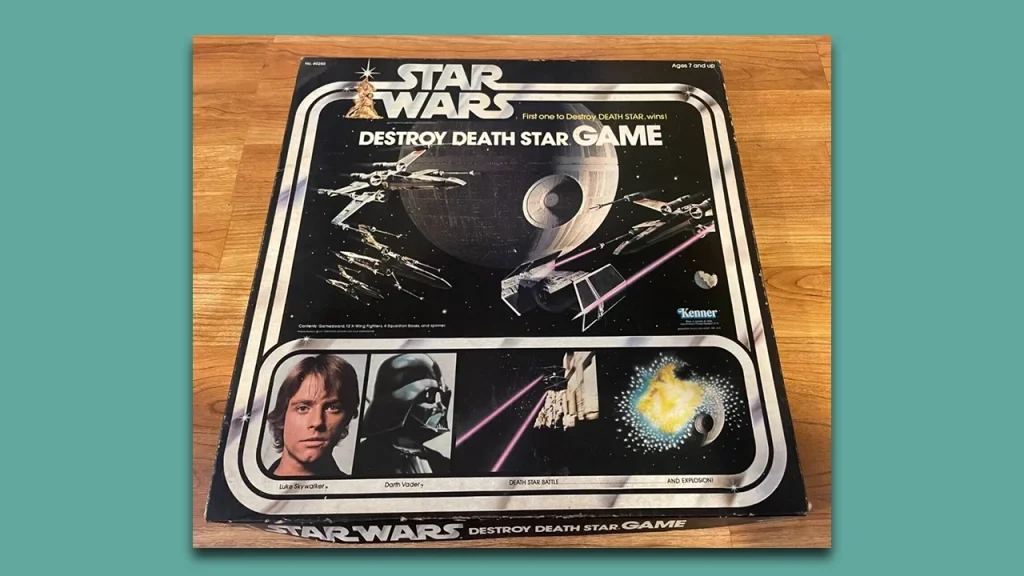
Card-driven, asymmetrical title Assault on Hoth, solitaire title Battle for Endor – which used the same cards and combat system as the Hoth game – and the stunning, deeply detailed and strategic starship combat simulation title Star Warriors, are all examples of how seriously Star Wars was being treated by West End Games during the late 80s.
It would take until the mid-90s for Star Wars to really make its mark in card game form, however and it was thanks to the success of another tabletop gaming behemoth: Magic: The Gathering.
When Magic: The Gathering (MTG) launched in 1993, its success as the world’s first collectable card game, or CCG practically saw the creation of an entirely new industry forming in its wake.
Gaming companies were eager to get their slice of the seemingly unstoppable growth that Wizards of the Coast’s MTG was seeing. As such, countless CCGs came and went in the mid to late 90s, many of which lured players in with their licenses.
The Decipher Era: 1995-2001
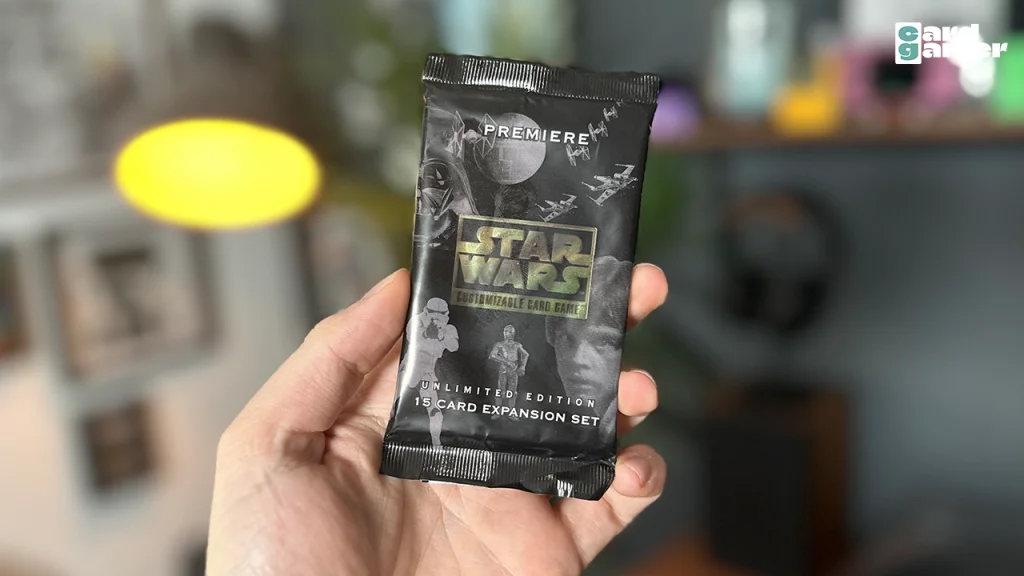
Decipher, Inc launched the Star Wars Customizable Card Game in 1995. Following the success of their well-received Star Trek Customizable Card Game, it was almost a no-brainer for them to tackle the action and adventure based a long time ago, in a galaxy far, far away.
The Star Wars Customizable Card Game featured photos of characters and movie scenes on its cards, with quite large blocks of text and different elements and symbols across the card front. The style wasn’t too dissimilar overall to that found in Decipher’s earlier release, the Star Trek Customizable Card Game; though of course, each game featured iconography and overall aesthetics to match the franchise it represented.
This was very common for licensed games of that era; rather than commission new art or repurpose images such as comic book illustrations, movie stills and publicity shots would feature on cards instead. Games such as the Aliens, Predator and Terminator CCGs all used very similar formatting with actual photos, as did the Babylon 5 CCG.
Interestingly, cards had different backs depending on whether they were Light Side or Dark Side cards; furthermore, there was a requirement that a game must consist of one player using a Light Side deck, against an opponent playing as the Dark Side.
Entering a tournament required players to have built one deck of cards from each side.
This asymmetrical aspect isn’t the norm in CCGs and made for some interesting design choices.
Location cards played a big part in the game; these could be off-planet or surface level and, additionally, could be Dark or Light Side. In fact, many locations did come in two versions, representing each side of the conflict, though their initial designation wasn’t fixed and Location cards could ‘switch sides’ during play.
The main resource of the game – much like Mana in Magic: The Gathering or Ink in Disney Lorcana as two examples – is, appropriately, Force.
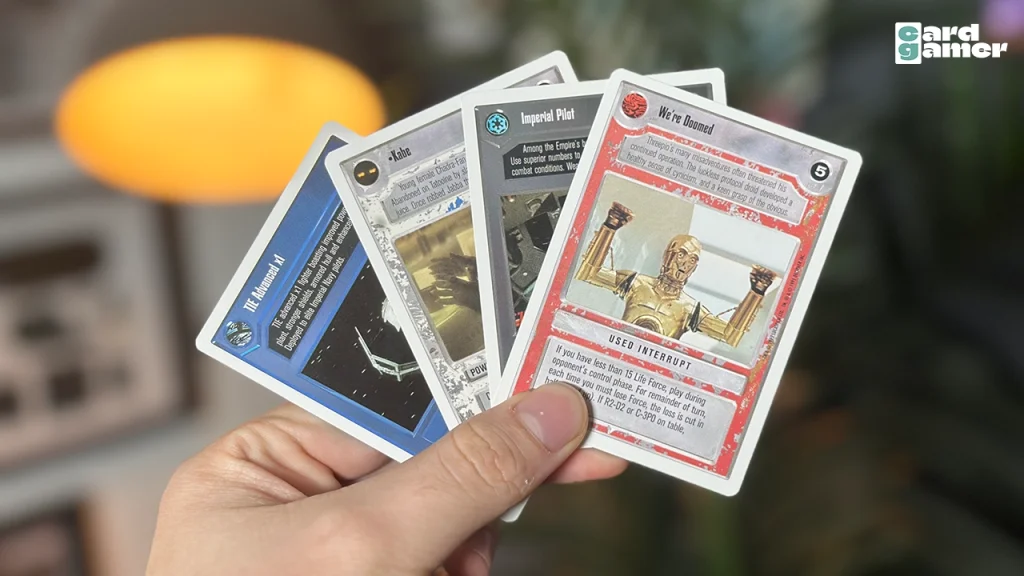
This was generated at Locations, allowing players to get their characters, vehicles, objects and effects into play.
Players spend Force points to use cards, with the objective of the game being to compel their opponent to discard all of their Life Force, via Force Drains.
As you can probably tell by the multiple uses of the word ‘force’ in the above summary, the Star Wars Customizable Card Game wasn’t the easiest game to learn; its rules were, at least initially, fairly clunky.
It didn’t help that initial ‘Starter Decks’ were just a random selection of 30 Light Side and 30 Dark Side cards; not enough to actually play the game at all, or any guarantee that you had a useful set of cards to begin with.
This was fixed with subsequent releases; Two Player Introductory Game sets, which had fixed, 60 card decks for each side and a single booster pack – to allow for at least a taster of deck building – did arrive, as did pre-constructed Light Side and Dark Side decks in expansions further down the line.
The Star Wars Customizable Card Game was pretty long lasting, with numerous expansions released between 1995-2001.
Though it began by covering the story, characters and settings from the first Star Wars film (1977’s A New Hope), it grew to cover not just the next two films in the original trilogy, but also the first prequel, The Phantom Menace, in 1999.
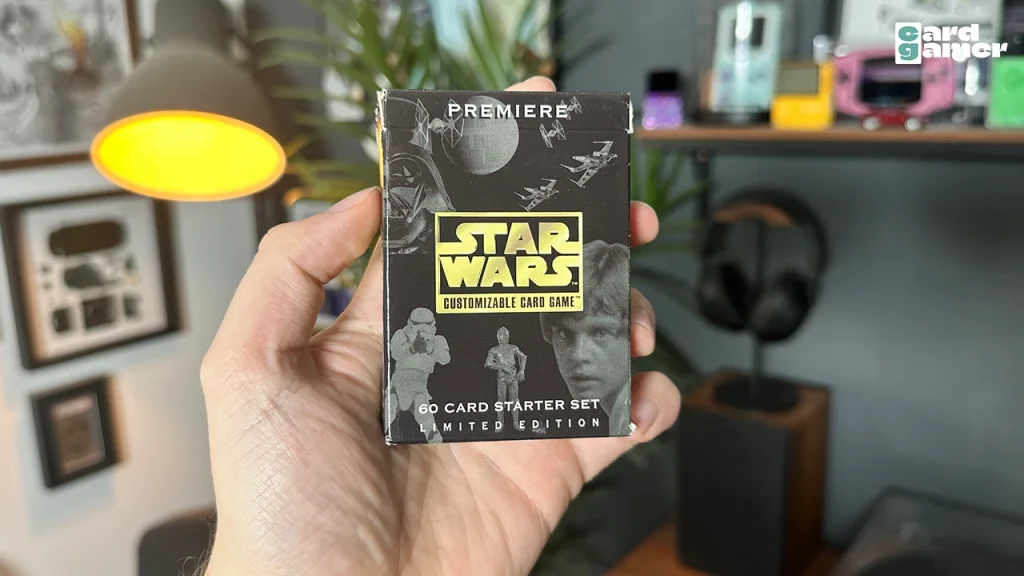
Incredibly, despite Decipher losing the Star Wars license in 2001 – to Wizards of the Coast – the Star Wars Customizable Card Game is still alive today.
That’s thanks to the CEO of publisher Decipher, Warren Holland, who made a pretty much unprecedented move in 2002, announcing that a ‘Players’ Committee’ would continue to organise tournaments and keep the game going, despite the lack of a license or ‘official’ publisher support.
Star Wars Customizable Card Game tournaments have been held without fail every year since 1996. In fact, the number of round one participants in 2023 was higher than any year in which the game was at its commercial, ‘official’ peak.
In 1996-1999, for example, the number of participants at round one never exceeded 56, yet in 2023 there were 69 players entering the tournament!
Virtual cards are also regularly released by the community to be used in the game and you can even play online against other players, at the phenomenal Star Wars CCG Players’ Committee website.
Prior to losing the Star Wars license altogether, Decipher also released a second CCG aimed at younger or beginner card game players, based on Star Wars Episode I: The Phantom Menace.
Released in 1999, the same year the prequel arrived in cinemas, Young Jedi was a massively simplified game and was consequently very easy to learn and play.
Even deck building, thanks to a lack of complexity on most cards, was incredibly straightforward and accessible.
Despite this, older Star Wars fans – particularly those who’d grown used to the deeply strategic, albeit complex Star Wars Customizable Card Game – were turned off by its lack of depth.
Though podracing and lightsaber duelling were added in further expansions, it didn’t save what was, ultimately, a very short lived game indeed.
Somewhat surprisingly, Decipher even launched a third Star Wars game, just prior to losing the license; the Jedi Knights Trading Card Game was released in 2001 and lasted just eight months.
Though novel at the time, its reliance on computer generated imagery has made it look an awful lot more dated even than many of the older games on this list; it was, like Young Jedi, very simplified in terms of its gameplay and it struggled to find an audience.
It does feel as if Jedi Knights was perhaps rushed, in order for Decipher to squeeze the last dollars of value from their Star Wars license.
Though we can’t be sure whether or not they knew the writing was on the wall when this game was in production – and despite a few innovations such as the CG imagery and gimmicky, stereoscopic 3D art on a number of cards – it certainly feels that it was a last gasp for the once mighty custodians of the Force at Decipher.
The Wizards of the Coast Era: 2001-2010
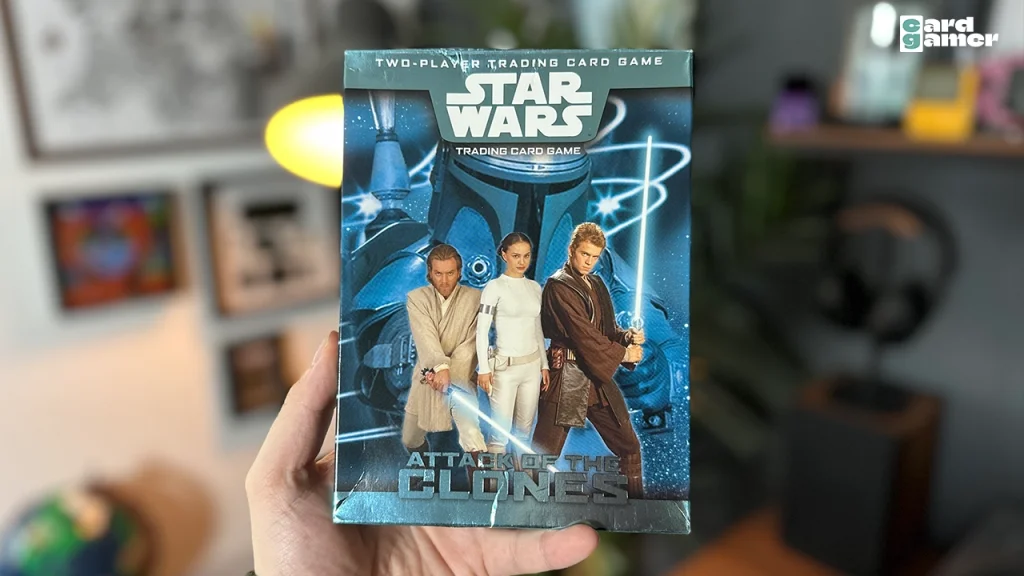
So what happened next when it came to Star Wars and CCGs?
Well, as mentioned above, Wizards of the Coast picked up the license in 2001; they went on to produce their own take on the franchise, with the Star Wars: Trading Card Game releasing in 2002.
Designed by none other than Magic: The Gathering creator Richard Garfield, the Star Wars: Trading Card Game shared the same approach as its predecessors to Light Side and Dark Side cards, as well as a reliance on photo imagery, but took an entirely different approach in just about all other areas.
In the Star Wars: Trading Card Game, players choose a side and then battle over three areas on the game’s play mat: Space, Ground and Character.

This neatly presented the feel of a struggle on three fronts – not unlike those found in the climax of movies Return of the Jedi and The Phantom Menace, at the time of its publication (subsequent Star Wars movies have also repeated this triple battle formula to great effect).
The object of the game was to control two out of three areas to secure victory; in summary, you win the game by having at least one card in two of the three areas at the end of a round, as long as your opponent has no cards in those same areas.
It was always going to be tough to follow such a long running and beloved game, but the Star Wars: Trading Card Game managed to release at least ten booster sets, covering both the prequel and original trilogies.
It’s much more of a board game in its feel, with numerous types of counter tokens and dice, the latter of which introduce a level of randomness to the game, which seemed to turn off the more strategically minded fans of CCGs.
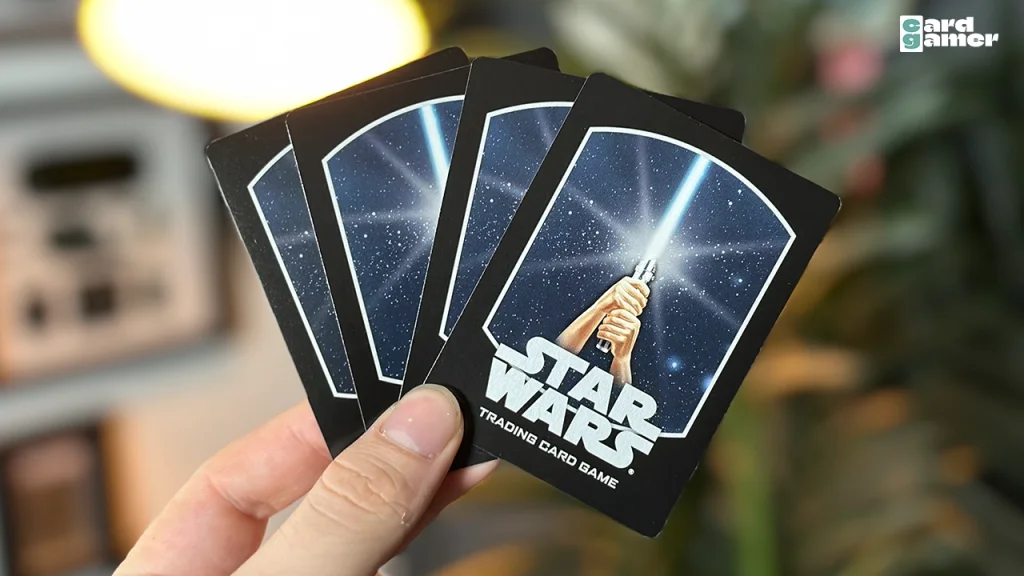
Overall, the Star Wars: Trading Card Game was a much more accessible game than the Star Wars Customizable Card Game, but its simplicity perhaps worked against it in the long run.
It also wasn’t helped by the divisive nature of the prequels, which were released during the same time period as the game and turned many long term, older fans away from the franchise.
During this period, Wizards of the Coast also used their Star Wars license to produce tabletop RPGS and miniatures, alongside the TCG.
The Star Wars PocketModel TCG: 2007
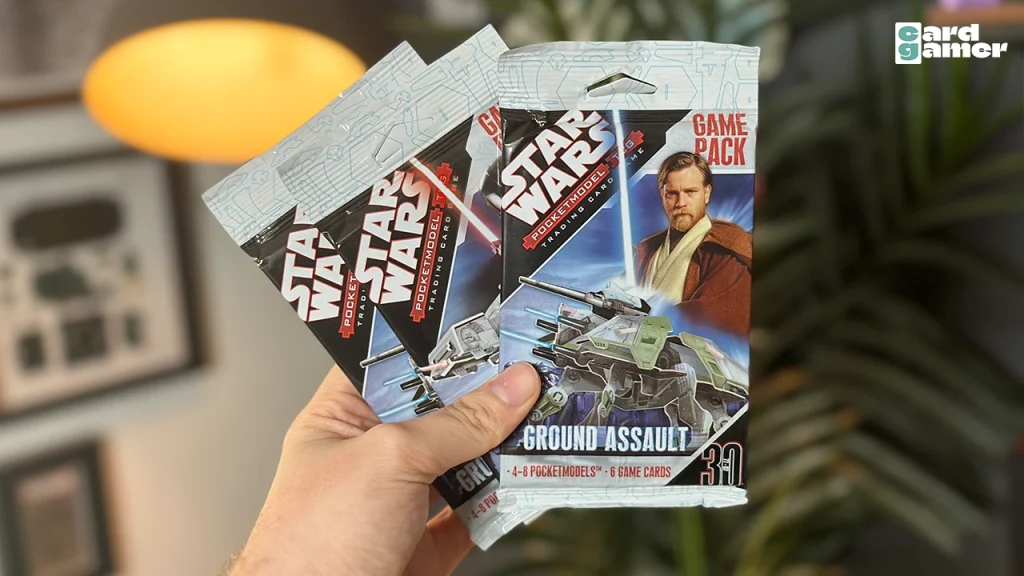
WizKids released the Star Wars PocketModel TCG in 2007, using the same innovative format they pioneered in their Pirates of the Spanish Main Constructible Strategy Game.
As in the earlier, pirate themed game, in the Star Wars PocketModel TCG, players would buy starter and booster packs that contained plastic cards, each of which allowed you to press out its pieces and build them into vehicles.
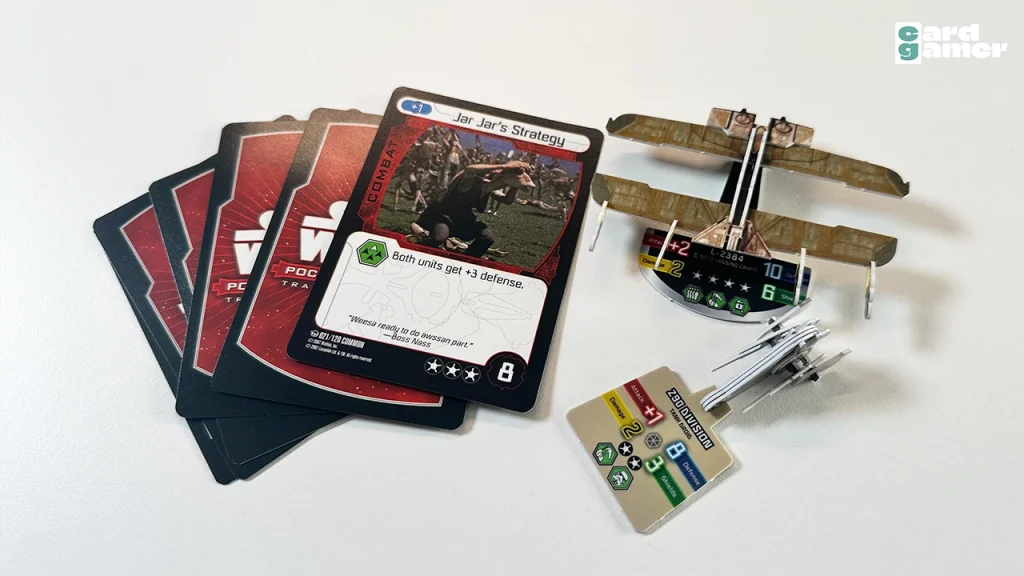
These were then used in conjunction with a deck of cards to play a fast paced miniature combat game on a tabletop.
Though it had TCG in its name and did feature cards that you could build a deck with, in order to enhance the abilities of your miniatures, it definitely had the feel of a game such as Warhammer or, more appropriately, the X-Wing Miniatures Game.
The Fantasy Flight Era: 2012-Present
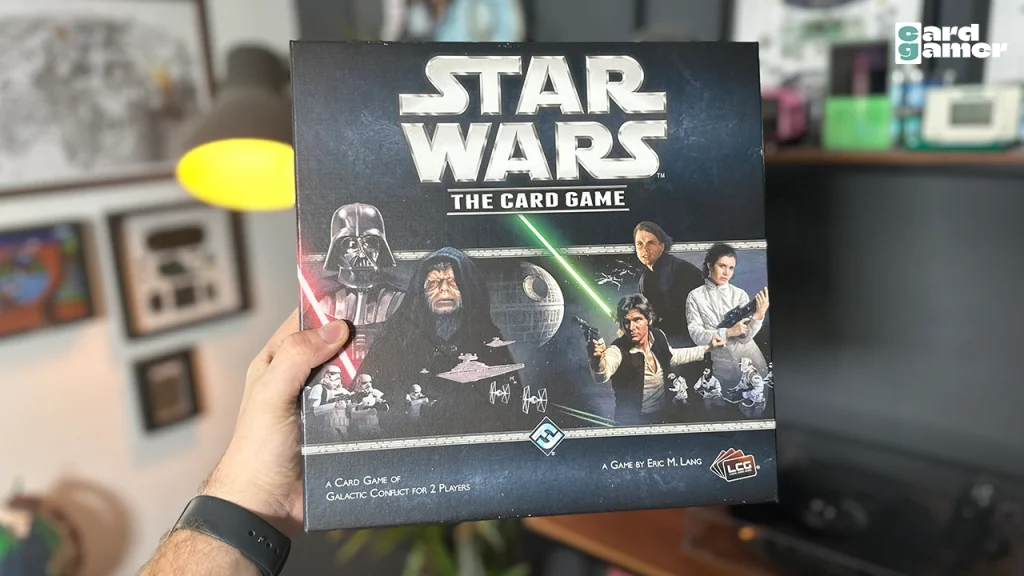
In terms of the next CCG-style game to hit stores, that would arrive in the form of 2012’s Star Wars: The Card Game, from Fantasy Flight Games.
Interestingly, despite prominently featuring deck building, it’s based around the much more consumer friendly Living Card Game model, pretty much pioneered by Fantasy Flight themselves.
What that means is that expansion sets are released, but not in booster packs of random cards. Instead, when you pick up a new set you know exactly what cards it will contain and in which number; they may introduce new settings, continue stories from prior sets or bring new mechanics into the game, but ultimately, you know that if you have the same sets as your opponent, you’re both building your deck from a level playing field.
It does stop the meta game – whether that’s local, casual or in more competitive settings – devolving into the hunt for the rarest or most powerful cards, which can end up being a huge time and cost sink that ends up driving all but the most serious or wealthy players from continuing with the game.
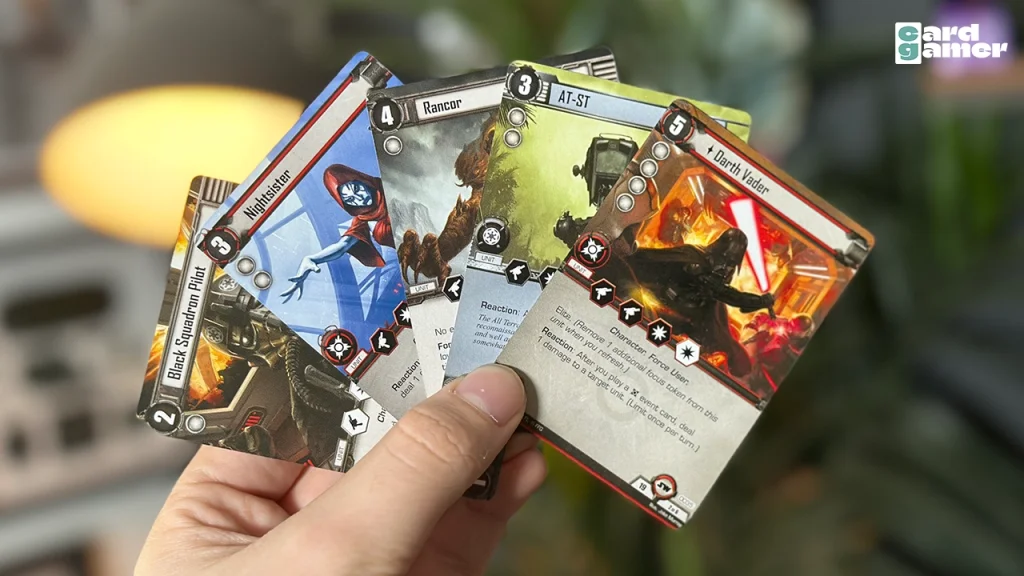
You can take a look at our ‘What Are Living Card Games‘ guide for a more in-depth look at this fairly unique model.
Once more, the designers of this particular game saw fit to split the cards into Light Side and Dark Side, with asymmetrical win conditions too.
If you’re playing as the Dark Side, you win if the Death Star dial reaches 12. And as the Light Side, your win is secured by destroying three Dark Side objectives.
During the game, players attack their objective cards belonging to their opponent, as well as defending their own and using cards to help with the ‘Force Struggle’, which can allow the Dark Side to increase their Death Star dial if left unchecked.
Though earlier games relied on movie stills and character photos for their card illustrations, Fantasy Flight instead commissioned their own artwork for Star Wars: The Card Game. The original starter set box art did use a more photo-style montage, but subsequent expansions used the painted art style of the cards, even when heavily photo referenced in a few examples.
This resulted in an absolutely gorgeous overall aesthetic for Star Wars: The Card Game, akin to the beautiful, detailed illustrations you’d expect in games such as Magic: The Gathering.
The game’s design itself was also up to Fantasy Flight’s usual high standards and is well regarded amongst board game fans; the Living Card Game model also brought in players who would have normally been put off by the expense and chase inherent in collectable card games.

Sadly, the LCG model couldn’t financially sustain Star Wars: The Card Game for the long term, and it was discontinued in 2018.
Star Wars Destiny was also brought to market during the same period that Star Wars: The Card Game was available.
Based around character dice and manipulating them with a custom deck of cards, Star Wars Destiny didn’t really feel like a CCG; instead, it was a clever hybrid of dice-based combat and cards using events, upgrades and support for your characters.
Like all other Star Wars games that have been covered here, it required that players create a deck featuring characters from only one side of the eternal struggle in the Star Wars universe, but did allow players to combine characters from different eras of the saga.
Star Wars Destiny was also relatively short lived, being discontinued in early 2020.
The next Star Wars card game from Fantasy Flight wasn’t a CCG or LCG, but it’s definitely worth mentioning given the strength of its design and execution.
Star Wars: The Deck Building Game is a self-contained title released in 2023 that takes a lot of inspiration from one of the very best card games of all time, Star Realms.
Regularly featuring on our very own ‘best of’ lists on Card Gamer, Star Realms has proven to be very influential; its clever design and mechanics can be felt throughout Star Wars: The Deck Building Game, though the latter does bring some ideas of its own to the table.
Sharing the concepts of small starting decks with basic units, as well as a central card row and similar mechanics in other areas too, Star Wars: The Deck Building Game diverges by splitting the players into, the Empire vs the Rebellion.
Many cards in the central marketplace style row can only be purchased by the side they represent, though players can attack opposing cards in the row to take them out of play entirely!
It’s a fantastic game (which made it onto our best deck building games list) and one that shares a similar art style to the upcoming Star Wars Trading Card Game, Star Wars Unlimited.
The CCG/TCG sector has seen massive growth in 2023, fuelled by events such as Magic: The Gathering’s 30th anniversary, with their Lord of the Rings-themed sets bringing lots of attention to the game, along with the launch of new trading card game, Disney Lorcana. This also brought an awful lot of new players into trading card games for the first time, and continues to do so.
With so much attention on trading card games, it feels like the right time for Star Wars to make a comeback.
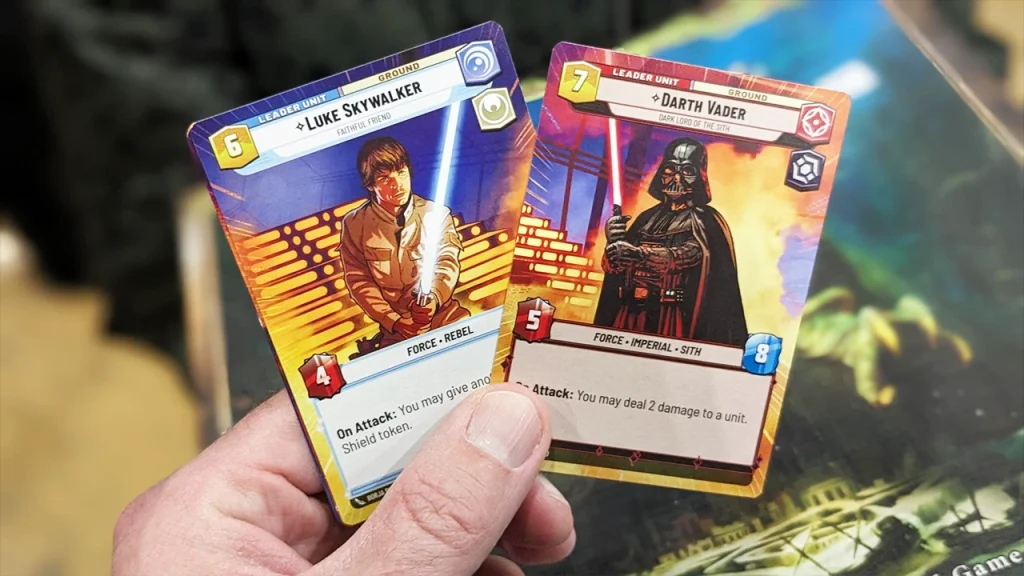
Star Wars Unlimited, with appealing visual design, straightforward mechanics and a simplified product range, looks set to attract more players to the tabletop. Perhaps they’ll be fans whose interest waned after the death of their previous, favourite Star Wars-themed card games, maybe even new fans or long term TCG/CCG players looking for a new game to sink their teeth into.
Fantasy Flight have already announced numerous sets for Star Wars Unlimited, so it does seem as if they’re in it for the long haul this time around.
It’s perhaps unlikely, however, that even the very promising Star Wars Unlimited – designed from the ground up to be more accessible and have more mainstream appeal – will have the impressive longevity of the very first Star Wars CCG, the Star Wars Customizable Card Game.
Just like the universe which launched on cinema screens a long time ago, it seems that Star Wars will always have a presence on the tabletops of card gamers, in some shape or form; the Force will be with us gamers, always.


